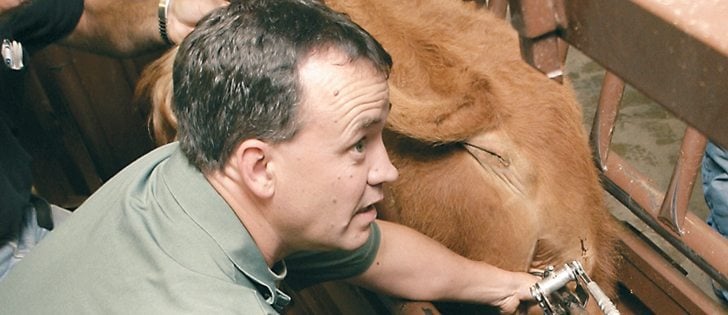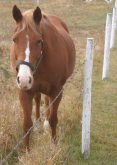Providing pain control to beef cattle during dehorning and castrating will become a requirement Jan. 1 under the beef cattle code of practice.
The code, which was released in 2013, is not legally binding.
However, it is a consideration in some provincial legislation, and its requirements and recommendations are considered to be best management practices that producers should voluntarily follow.
Dr. John Campbell, head of the Western College of Veterinary Medicine’s large animal clinical sciences department, gave an update on pain control Oct. 21 in a webinar organized by the Beef Cattle Re-search Council.
Read Also

Beef check-off collection system aligns across the country
A single and aligned check-off collection system based on where producers live makes the system equal said Chad Ross, Saskatchewan Cattle Association chair.
He said the code will require producers to provide pain control if they dehorn cattle after horn bud attachment, which is usually at two to three months of age.
Pain control must be provided during castration if the bull is older than nine months, but that will change to six months in 2018.
“I think pain control is becoming more of a priority within our industry as part of our animal welfare mandate,” said Campbell.
“Society expects it of us. It’s part of that social licence to operate.”
The approaching deadlines mean producers will have to familiarize themselves with pain control options, though consultation with a veterinarian is always recommended, he said.
There are two types of pain control:
- Anesthetics cause lack of feeling or awareness and dull pain to permit such things as surgery.
- Analgesics relieve pain.
Many analgesics are non-steroidal anti-inflammatory drugs (NSAIDS) and are commonly used in people and animals, Campbell said.
Three NSAIDS are licensed for use in cattle: ketaprofen, flunixin and meloxicam. All are injectable products.
One sedative, xylazine, is also approved for use to dull pain as well as sedate.
Ketaprofen and flunixin are short acting at 12 to 24 hours. Meloxicam lasts about 48 hours but has a longer withdrawal time, Campbell said.
Branding, dehorning and castration are specifically discussed in the code of practice.
Campbell said no pain control is required for branding, partly because there is little definitive research on pain levels and no good method of applying local analgesics.
“There’s no doubt it causes pain.”
Freeze branding causes less acute pain than hot iron, so producers might take that into consideration.
Anecdotal evidence indicates that recently branded calves return more quickly to their dam and move more easily if given meloxicam, he added, but more research is needed.
For castration, the primary directive is to do it as soon as practically possible on young animals, he said.
“The method may not matter so much as the timing of the procedure.”
Research on flunixin and meloxicam has shown promising results in reducing post-castration pain.
Campbell said surgical castration likely causes more acute pain for a short time, while banding likely produces less pain over a longer time. The duration of castration done by banding makes it difficult to determine the best time to provide pain medication.
Dehorning has the most research, much of it done in the dairy industry, Campbell said.
Eighty-seven percent of fed cattle and 89 percent of non-fed cattle are polled in Canada. The proportion of horned cattle continues to decrease, so dehorning is steadily becoming less of an issue.
“Bottom line is, we should be using polled bulls whenever we can,” he said. “If we’re going to dehorn, we should do it as young as possible and certainly before horn bud attachment.”
Campbell said more research is needed about the best method of dehorning.
Producers and veterinarians used to prefer caustic paste on the horn buds of young calves, but there have since been indications that “it’s quite a bit more painful than we thought it was.”
Campbell said the public might not distinguish between dairy and beef cattle when it comes to pain and stress, but there are differences that are reflected in the respective codes of practice for beef and dairy.


















